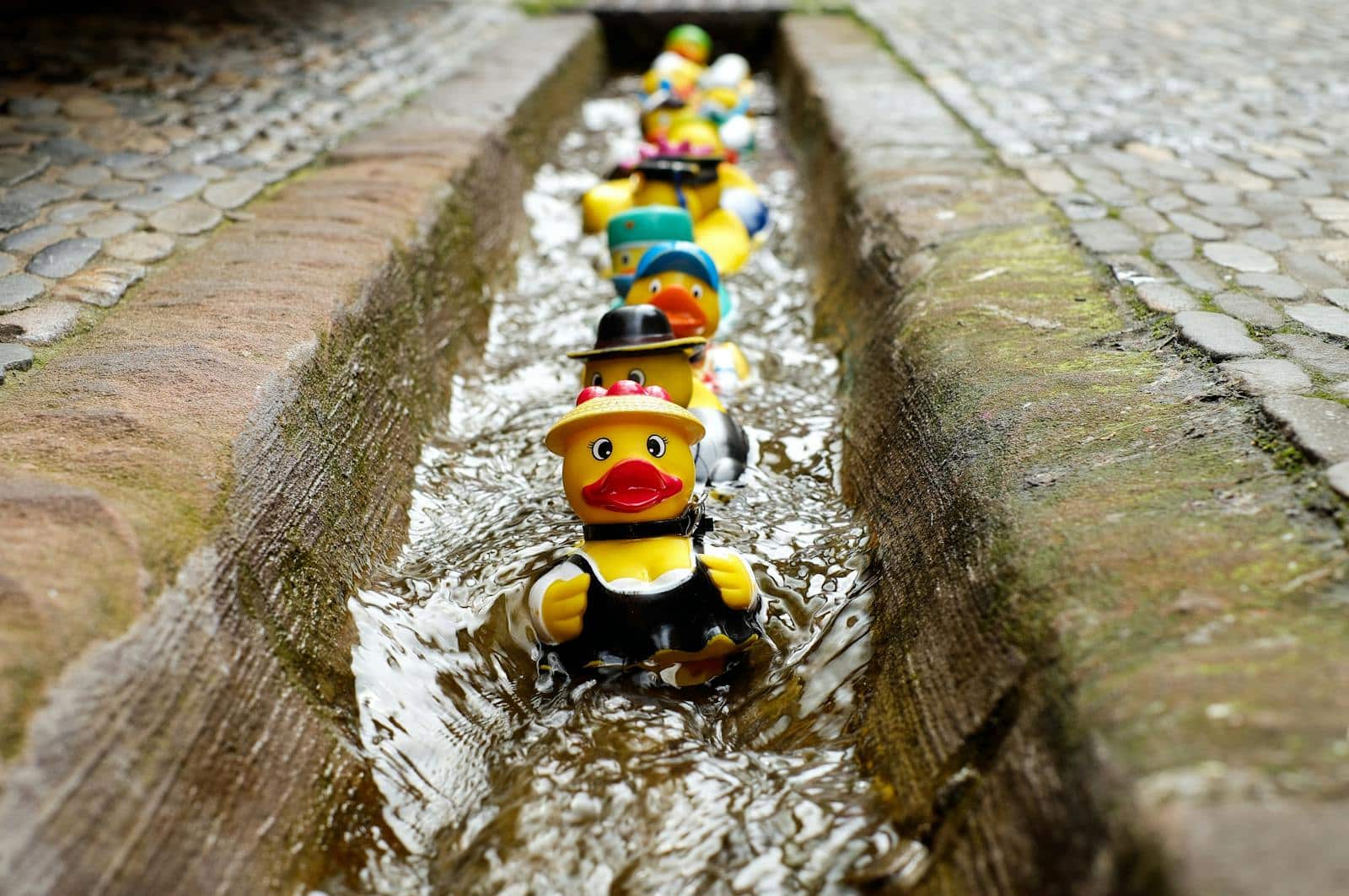What is a water line?
Your home’s and business’s water supply system is a complex network of pipes and connections that bring clean, potable water from municipal sources directly to your faucets, toilets, and appliances. At the heart of this system lies the water line—a critical component that most homeowners rarely think about until something goes wrong. Understanding what water lines are, how they function, and what can affect them is essential for maintaining your property and avoiding costly repairs.
Water lines represent the lifeline between your home and the municipal water supply system. These pipes carry fresh water under pressure from the city’s water distribution system to your property, where they connect to your home’s internal plumbing network. Without properly functioning water lines, your household would lack access to the clean water needed for drinking, cooking, bathing, and countless daily activities.
This comprehensive guide will explore everything you need to know about water lines, from their basic functions to common problems homeowners face. We’ll examine the different types of water supply lines, explain the difference between water lines and sewer lines, and provide practical advice for maintenance and replacement. Whether you’re a new homeowner or simply want to better understand your property’s infrastructure, this information will help you make informed decisions about your water supply system.
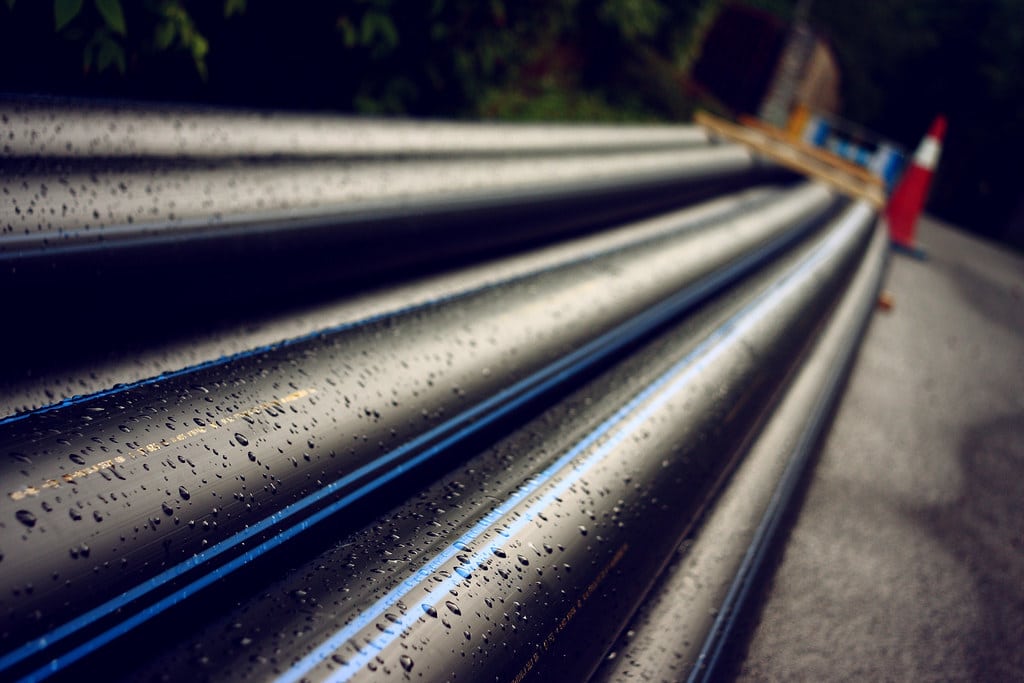
“Water supply” by brunotto [Still very busy…] is licensed under CC BY-NC-ND 2.0
Understanding Water Lines and Water Supply Systems
A water line is fundamentally a pipe that can supply water from one point to another within your property’s water supply system. The term encompasses several different components, each serving specific functions in delivering clean water throughout your home.
The water service line represents the primary connection between your property and the municipal water distribution system. This pipe typically runs from the water main—the large diameter pipes that carry water through neighborhoods—to your water meter and then to your home. The water meter serves as the measuring point where the city tracks your water consumption for billing purposes.
From the water meter, supply lines branch out to serve different areas of your home. These water supply lines connect to various plumbing fixtures, including sinks, toilets, showers, and appliances like washing machines and dishwashers. The entire network operates under pressure to ensure adequate water flow reaches every point of use.
Water distribution systems vary depending on your location and the age of your neighborhood. Newer developments typically feature modern piping materials and efficient layouts, while older areas may still rely on aging infrastructure that requires more frequent maintenance and eventual replacement.
The water service pipe that connects your home to the municipal system represents a critical junction point. This connection determines not only your water pressure and flow rate but also affects water quality and system reliability. Understanding this connection helps homeowners recognize when professional attention may be needed.
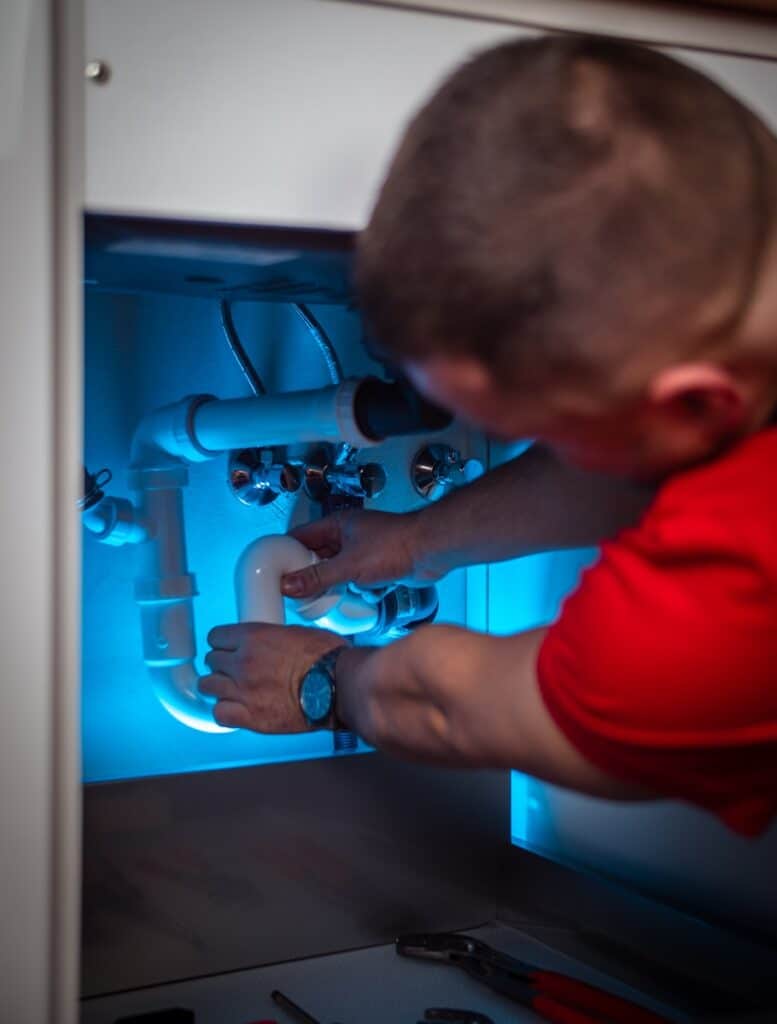
Photo by Timur Shakerzianov on Unsplash
Types of Water Supply Lines and Materials
Water supply lines come in various materials, each with distinct characteristics that affect durability, water quality, and maintenance requirements. The choice of material often depends on when your home was built, local building codes, and environmental factors specific to your area.
Cast iron pipes were commonly used in older homes and municipal water systems. These large diameter pipes can last for decades but are susceptible to corrosion over time. As cast iron ages, it may develop rust that affects water quality and reduces water flow. Many older neighborhoods are gradually replacing cast iron infrastructure with more modern materials.
Copper pipes became the standard for residential water supply lines for many years due to their durability and resistance to bacteria. Copper naturally inhibits bacterial growth and provides excellent longevity when properly installed. However, copper can be affected by certain water chemistry conditions and may require replacement after several decades of service.
Ductile iron represents an improvement over traditional cast iron, offering greater flexibility and resistance to breaking. This material is often used for larger water mains and supply lines where strength and durability are paramount. Ductile iron pipes typically feature protective coatings to prevent corrosion and extend service life.
Modern plastic materials, including PVC and PEX, have become increasingly popular for water supply applications. These materials resist corrosion, are lightweight, and can be more cost-effective to install. However, material selection must comply with local building codes and may vary depending on whether the pipes carry hot or cold water.
The choice of pipe material affects not only the initial installation cost but also long-term maintenance requirements and water quality. Homeowners should understand what materials were used in their property’s water supply system to make informed decisions about maintenance and replacement.
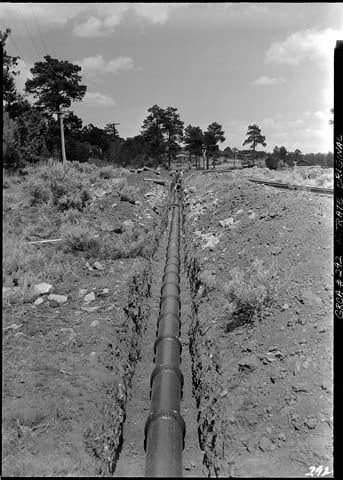
“00292 Grand Canyon Historic_ Bright Angel Sewer Line 1936” by Grand Canyon NPS is licensed under CC BY 2.0
Water Lines vs. Sewer Lines: Key Differences
Many homeowners confuse water lines with sewer lines, but these systems serve entirely different functions and require distinct maintenance approaches. Understanding the difference between these systems is crucial for proper home maintenance and troubleshooting problems.
Water lines carry clean, pressurized water from the municipal supply to your home. These pipes operate under pressure to ensure adequate flow reaches all plumbing fixtures and appliances. The water flowing through these lines is potable, meaning it’s safe for drinking, cooking, and other household uses.
Sewer lines, by contrast, carry wastewater and sewage away from your home to either the municipal sewer system or a septic tank. These pipes rely on gravity flow rather than pressure, sloping downward to ensure proper drainage. The waste material flowing through sewer lines requires treatment before it can be safely returned to the environment.
The location of these systems also differs significantly. Water supply lines typically run closer to the surface and may follow more direct routes from the street to your home. Sewer lines must maintain proper slope for drainage and often run deeper underground, following specific grading requirements.
Maintenance requirements vary considerably between water and sewer systems. Water line issues often involve pressure problems, leaks, or water quality concerns. Sewer line problems typically manifest as blockages, slow drainage, or sewage backups. Each system requires specialized knowledge and equipment for proper diagnosis and repair.
Responsibility for maintenance and repairs may also differ depending on your location and local regulations. Some municipalities maintain responsibility for portions of the water service line, while homeowners are typically responsible for sewer line maintenance on their property.
Common Water Line Issues and Warning Signs
Water line problems can develop gradually or appear suddenly, potentially causing significant property damage if not addressed promptly. Recognizing early warning signs helps homeowners take action before minor issues become major repairs.
Burst pipes represent one of the most serious water line emergencies. These failures can occur due to freezing temperatures, aging materials, ground movement, or excessive pressure. Burst pipes can cause extensive water damage and require immediate professional attention to minimize property loss.
Leaks in water supply lines may not always be immediately visible, especially when they occur underground. Signs of hidden leaks include unexplained increases in water bills, wet spots in yards, foundation settling, or reduced water pressure throughout the home. Even small leaks can waste significant amounts of water and potentially undermine your property’s foundation.
Water pressure problems often indicate issues within the water supply system. Low pressure throughout the home may suggest problems with the main service line, while localized pressure issues typically point to problems with specific supply lines or fixtures. Sudden changes in water pressure warrant professional investigation.
Water quality changes can signal problems with your water supply lines. Discolored water, unusual tastes or odors, or visible particles may indicate pipe corrosion, contamination, or other system problems. These issues require prompt attention to ensure your water remains safe for household use.
Unusual sounds from your plumbing system, such as banging, whistling, or gurgling, may indicate problems with water flow, pressure, or water pipe integrity. These symptoms often precede more serious problems and should be investigated by qualified professionals.
Water Line Maintenance and Replacement
Proper maintenance of your water supply system can extend the life of your pipes and prevent costly emergency repairs. Understanding what homeowners can do themselves and when to contact professionals helps ensure your system operates reliably.
Regular visual inspections of accessible water lines can help identify potential problems early. Look for signs of corrosion, mineral buildup, or moisture around pipe joints and connections. Any visible damage or unusual conditions should be evaluated by qualified plumbing professionals.
Water pressure monitoring provides valuable information about your system’s condition. Sudden changes in pressure, whether increases or decreases, may indicate developing problems that require attention. Installing pressure gauges at key points can help track system performance over time.
Pipe insulation protects water lines from freezing damage, particularly in unheated areas like basements, crawl spaces, or exterior walls. Proper insulation is especially important for pipes carrying cold water in areas where temperatures may drop below freezing.
Water line replacement becomes necessary when pipes reach the end of their useful life or develop recurring problems. The timing for replacement can vary depending on pipe material, water chemistry, soil conditions, and usage patterns. Professional assessment can help determine when replacement is more cost-effective than continued repairs.
The replacement process typically involves excavation to access buried pipes, installation of new materials, and restoration of landscaping or hardscaping. Modern replacement techniques, including trenchless methods, can minimize property disruption in some situations.

Photo by Vinicius “amnx” Amano on Unsplash
Professional Water Line Services and When to Call
While homeowners can handle some basic maintenance tasks, many water line issues require professional expertise and specialized equipment. Understanding when to contact qualified professionals helps prevent minor problems from becoming major disasters.
Emergency situations that require immediate professional attention include burst pipes, complete loss of water supply, or sewage backups that may indicate cross-connections between water and sewer systems. These situations can cause significant property damage and health hazards if not addressed promptly.
Water line repairs often require specialized tools and knowledge of local building codes. Professional plumbers have the equipment needed to locate underground leaks, assess pipe condition, and perform repairs that meet regulatory requirements. Attempting complex repairs without proper training can lead to more extensive damage.
Pipe repair techniques vary depending on the location and extent of damage. Professional services may include spot repairs for localized problems, pipe relining for internal restoration, or complete replacement for extensively damaged sections. The choice of repair method depends on factors that require professional assessment.
Installation of new water lines requires permits and inspections in most jurisdictions. Professional contractors understand local requirements and can ensure work meets all applicable codes and standards. This compliance protects homeowners and ensures proper system function.
When seeking professional water line services, obtain multiple quotes to understand the scope of work and associated costs. Quotes should include materials, labor, permits, and any necessary restoration work. Be wary of estimates that vary dramatically, as this may indicate differences in the proposed scope of work.

Photo by Kenny Eliason on Unsplash
Understanding Water Line Replacement and Costs
The financial responsibility for water line maintenance and repair varies depending on the location of the problem and local utility policies. Understanding these boundaries helps homeowners plan for potential expenses and know when to contact their water utility company.
The curb stop typically marks the boundary between utility responsibility and homeowner responsibility. This valve, usually located near the street, allows the utility company to shut off water service to individual properties. In most areas, the utility maintains responsibility for the water main and service line up to this point.
Homeowners are generally responsible for water supply lines from the curb stop to their home, including the water meter in some jurisdictions. This responsibility includes maintenance, repairs, and replacement of these components. Understanding your specific local policies helps avoid confusion during service calls.
Costs for water line services can vary significantly depending on the extent of work required, local labor rates, and material choices. Simple repairs may cost a few hundred dollars, while complete water service line replacement can cost several thousand dollars. The depth of burial, landscaping restoration, and permit requirements all affect final costs.
Insurance coverage for water line problems varies by policy and the cause of damage. Many homeowners’ insurance policies exclude coverage for gradual damage like slow leaks but may cover sudden failures. Reviewing your policy with your insurance agent clarifies what protection you have.
Some utility companies offer service line protection programs that can help cover repair costs for water and sewer lines. These programs typically involve monthly fees but can provide valuable protection against unexpected repair expenses.
Frequently Asked Questions About Water Lines
What’s the difference between a water line and a water main?
A water main is the large diameter pipe that carries water through neighborhoods and streets, typically owned and maintained by the utility company. A water line refers to the smaller pipes that branch off from the water main to serve individual properties, including both the service line and the supply lines within your home.
How long do water lines typically last?
The lifespan of water lines varies significantly based on material, soil conditions, water chemistry, and usage. Copper pipes can last 50-70 years, while cast iron may last 75-100 years but often requires replacement sooner due to corrosion. Modern plastic materials may last even longer under proper conditions.
What causes water lines to break?
Water lines can fail due to various factors including age-related deterioration, ground movement, tree root intrusion, freezing temperatures, and excessive pressure. Corrosion from soil conditions or water chemistry can also weaken pipes over time, leading to eventual failure.
How can I tell if I have a water line leak?
Signs of water line leaks include unexplained increases in water bills, wet spots in your yard, reduced water pressure, discolored water, or the sound of running water when all fixtures are turned off. Some leaks may be visible, while others require professional detection equipment to locate.
Can I repair my own water line?
While homeowners can handle some basic maintenance tasks, most water line repairs require professional expertise due to the complexity of the work, the need for specialized tools, and local permitting requirements. Improper repairs can lead to more extensive damage and potential health hazards.
What should I do if my water line breaks?
If you suspect a broken water line, immediately shut off your water supply at the main valve and contact a qualified plumbing professional. For emergencies involving significant water flow or property damage, you may also need to contact your utility company to shut off service at the street.
Helpful Links and Resources
Here are seven valuable resources for homeowners looking to learn more about water lines, sewer systems, and general plumbing information:
American Water Works Association (AWWA)
Discover insights on water supply systems, management, and maintenance from one of the leading water-focused organizations.
Environmental Protection Agency (EPA) – Water Topics
Explore guidelines, resources, and regulations related to water quality and safe water usage in homes and communities.
A detailed YouTube channel offering advice on plumbing repairs, maintenance, and common household plumbing issues.
Get access to resources and educational material tailored to private well owners and small water systems.
Family Handyman – Plumbing Repairs
A DIY-friendly resource with step-by-step guides on handling basic plumbing repair jobs, including water line maintenance.
Angi (formerly Angie’s List) – Solution Center
Find reliable professional tips, read reviews, and read FAQs about Plumbing
Home Depot – How To and DIY Center
A store-based resource featuring guides and product recommendations for plumbing projects, including tools and materials.
These resources can aid homeowners in better understanding water line systems and provide guidance for proactive maintenance or professional services when needed.
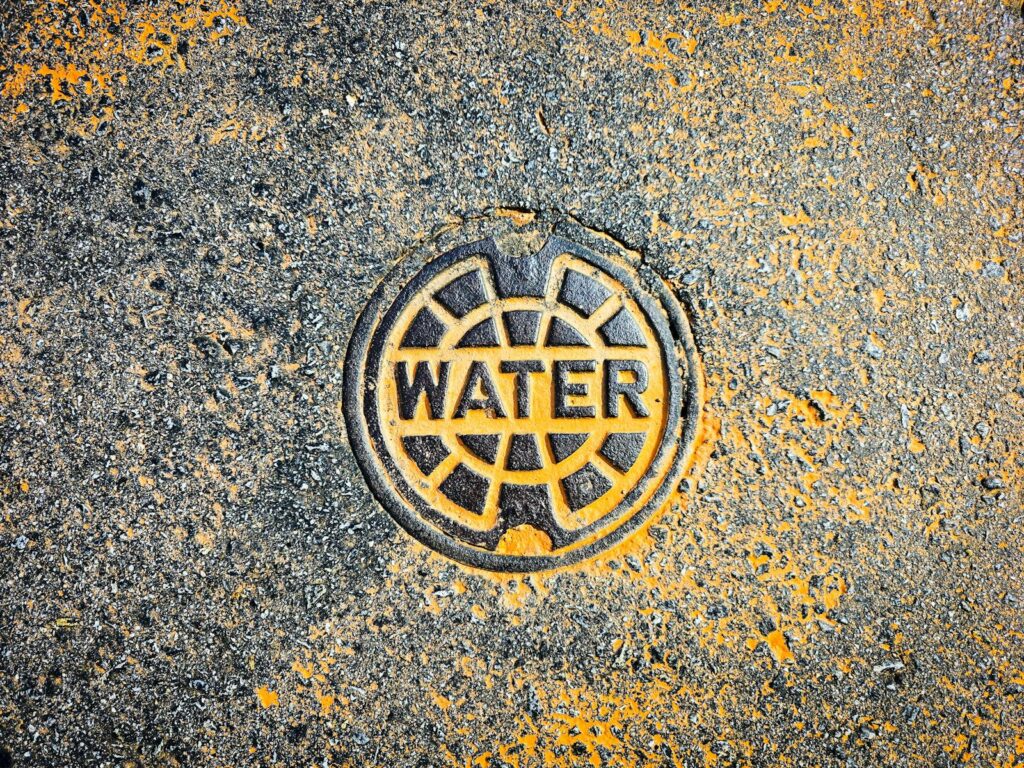
Photo by R9 Media Photo Collective on Pexels
Taking Action to Protect Your Water Supply System | What Is A Water Line?
Understanding your home’s water lines and water supply system empowers you to make informed decisions about maintenance, repairs, and upgrades. Regular attention to your water supply infrastructure can prevent costly emergencies and ensure reliable access to clean water for your household needs.
The complexity of modern water distribution systems requires professional expertise for most repairs and replacements. When water line issues arise, contacting qualified professionals ensures proper diagnosis and repair while maintaining compliance with local building codes and safety standards.
For homeowners in the DMV area, G.A. Eberly Plumbing & Heating has provided trusted water line services since 1909. Our experienced team can assess your water supply system, provide honest recommendations, and perform quality repairs that stand the test of time. Contact us today for a quote on your water line needs and experience the difference that over a century of expertise makes in protecting your home’s most essential utility system.

